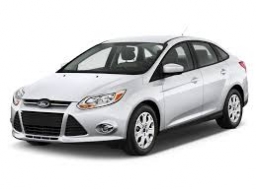The car
The car weight 1280 kg and increased its speed from 7.3 m/s to 63 km/h on a track of 37.2 m. What force did the car engine have to exert?
Final Answer:

Tips for related online calculators
Are you looking for help with calculating roots of a quadratic equation?
Do you want to convert velocity (speed) units?
Do you want to convert time units like minutes to seconds?
Do you want to convert velocity (speed) units?
Do you want to convert time units like minutes to seconds?
You need to know the following knowledge to solve this word math problem:
algebraUnits of physical quantitiesthemes, topicsGrade of the word problem
Related math problems and questions:
- Car
 At what horizontal distance reaches the car weight m = 753 kg speed v = 74 km/h when the car engine develops a tensile force F = 3061 N. (Neglect resistance of the environment.)
At what horizontal distance reaches the car weight m = 753 kg speed v = 74 km/h when the car engine develops a tensile force F = 3061 N. (Neglect resistance of the environment.) - Friction coefficient
 What is the weight of a car when it moves on a horizontal road at a speed of v = 50 km/h at engine power P = 7 kW? The friction coefficient is 0.07
What is the weight of a car when it moves on a horizontal road at a speed of v = 50 km/h at engine power P = 7 kW? The friction coefficient is 0.07 - Increases 69454
 The car weighs 1850 kg and increases its speed from 27 to 81 km/h. How much has its kinetic energy increased?
The car weighs 1850 kg and increases its speed from 27 to 81 km/h. How much has its kinetic energy increased? - Acceleration 80626
 The car stopped at an initial speed of 90 km/h on a track of 62.5 m. What was its acceleration, and how long did it take to brake the car?
The car stopped at an initial speed of 90 km/h on a track of 62.5 m. What was its acceleration, and how long did it take to brake the car? - A car acceleration
 A car increased its speed from 21.6 km/h to 108 km/h on a 54 meter long track. Determine its acceleration, assuming that the motion is uniformly accelerated.
A car increased its speed from 21.6 km/h to 108 km/h on a 54 meter long track. Determine its acceleration, assuming that the motion is uniformly accelerated. - G Force, mass
 The car, with a weight of 20 kN, travels at a speed of 54 km/h. What is its kinetic energy?
The car, with a weight of 20 kN, travels at a speed of 54 km/h. What is its kinetic energy? - Refueling 83303
 A liter of gasoline costs €1.2. After refueling, my car weight increased by 15 kg. The density of gasoline is p=750kg/m³. How many euros did I fill up with?
A liter of gasoline costs €1.2. After refueling, my car weight increased by 15 kg. The density of gasoline is p=750kg/m³. How many euros did I fill up with?
